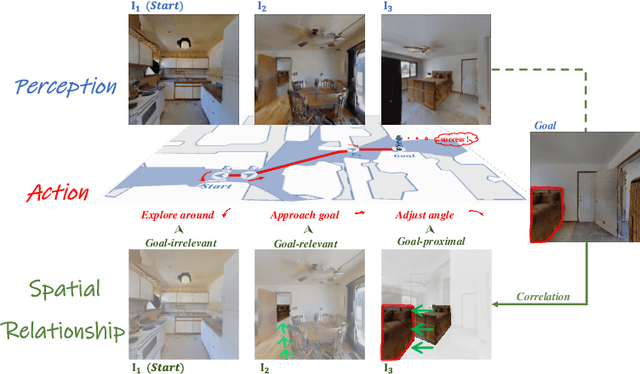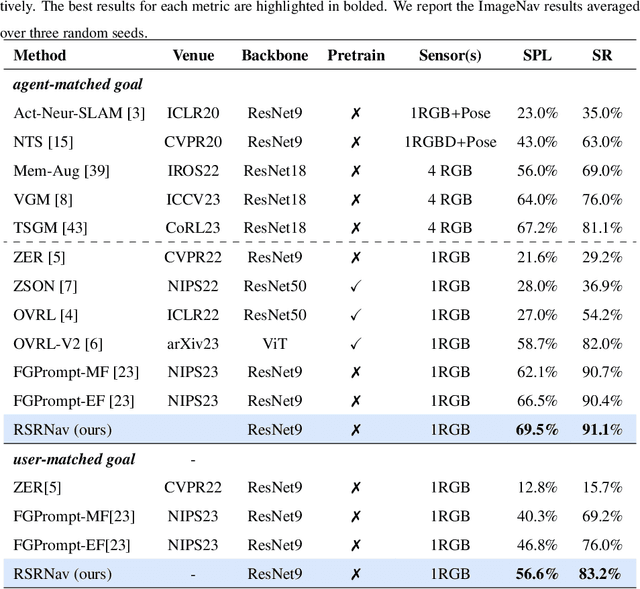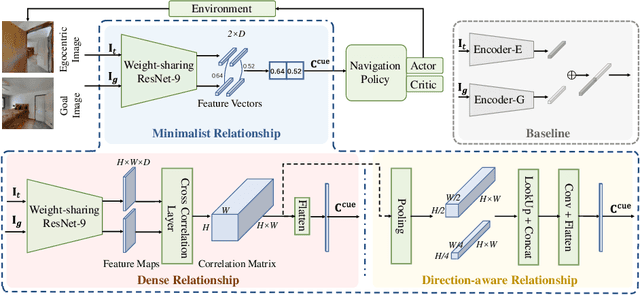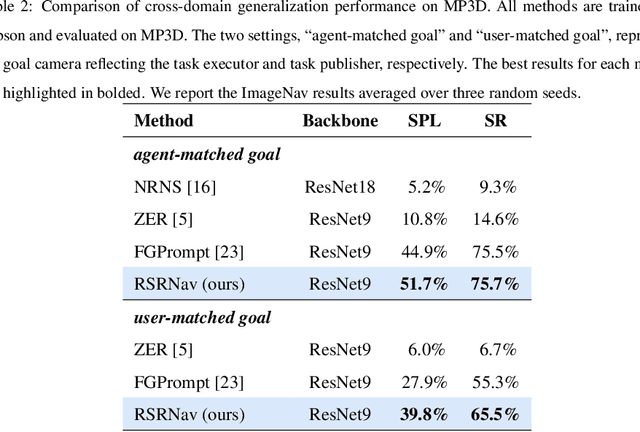Le Wang
Xi'an Jiaotong University
Probing Latent Knowledge Conflict for Faithful Retrieval-Augmented Generation
Oct 14, 2025Abstract:Retrieval-Augmented Generation (RAG) has emerged as a powerful paradigm to enhance the factuality of Large Language Models (LLMs). However, existing RAG systems often suffer from an unfaithfulness issue, where the model's response contradicts evidence from the retrieved context. Existing approaches to improving contextual faithfulness largely rely on external interventions, such as prompt engineering, decoding constraints, or reward-based fine-tuning. These works treat the LLM as a black box and overlook a crucial question: how does the LLM internally integrate retrieved evidence with its parametric memory, particularly under knowledge conflicts? To address this gap, we conduct a probing-based analysis of hidden-state representations in LLMs and observe three findings: knowledge integration occurs hierarchically, conflicts manifest as latent signals at the sentence level, and irrelevant context is often amplified when aligned with parametric knowledge. Building on these findings, we propose CLEAR (Conflict-Localized and Enhanced Attention for RAG), a framework that (i) decomposes context into fine-grained sentence-level knowledge, (ii) employs hidden-state probing to localize conflicting knowledge, and (iii) introduces conflict-aware fine-tuning to guide the model to accurately integrate retrieved evidence. Extensive experiments across three benchmarks demonstrate that CLEAR substantially improves both accuracy and contextual faithfulness, consistently outperforming strong baselines under diverse conflict conditions. The related resources are available at https://github.com/LinfengGao/CLEAR.
SAMPO:Scale-wise Autoregression with Motion PrOmpt for generative world models
Sep 19, 2025Abstract:World models allow agents to simulate the consequences of actions in imagined environments for planning, control, and long-horizon decision-making. However, existing autoregressive world models struggle with visually coherent predictions due to disrupted spatial structure, inefficient decoding, and inadequate motion modeling. In response, we propose \textbf{S}cale-wise \textbf{A}utoregression with \textbf{M}otion \textbf{P}r\textbf{O}mpt (\textbf{SAMPO}), a hybrid framework that combines visual autoregressive modeling for intra-frame generation with causal modeling for next-frame generation. Specifically, SAMPO integrates temporal causal decoding with bidirectional spatial attention, which preserves spatial locality and supports parallel decoding within each scale. This design significantly enhances both temporal consistency and rollout efficiency. To further improve dynamic scene understanding, we devise an asymmetric multi-scale tokenizer that preserves spatial details in observed frames and extracts compact dynamic representations for future frames, optimizing both memory usage and model performance. Additionally, we introduce a trajectory-aware motion prompt module that injects spatiotemporal cues about object and robot trajectories, focusing attention on dynamic regions and improving temporal consistency and physical realism. Extensive experiments show that SAMPO achieves competitive performance in action-conditioned video prediction and model-based control, improving generation quality with 4.4$\times$ faster inference. We also evaluate SAMPO's zero-shot generalization and scaling behavior, demonstrating its ability to generalize to unseen tasks and benefit from larger model sizes.
AudioGen-Omni: A Unified Multimodal Diffusion Transformer for Video-Synchronized Audio, Speech, and Song Generation
Aug 01, 2025Abstract:We present AudioGen-Omni - a unified approach based on multimodal diffusion transformers (MMDit), capable of generating high-fidelity audio, speech, and songs coherently synchronized with the input video. AudioGen-Omni introduces a novel joint training paradigm that seamlessly integrates large-scale video-text-audio corpora, enabling a model capable of generating semantically rich, acoustically diverse audio conditioned on multimodal inputs and adaptable to a wide range of audio generation tasks. AudioGen-Omni employs a unified lyrics-transcription encoder that encodes graphemes and phonemes from both sung and spoken inputs into dense frame-level representations. Dense frame-level representations are fused using an AdaLN-based joint attention mechanism enhanced with phase-aligned anisotropic positional infusion (PAAPI), wherein RoPE is selectively applied to temporally structured modalities to ensure precise and robust cross-modal alignment. By unfreezing all modalities and masking missing inputs, AudioGen-Omni mitigates the semantic constraints of text-frozen paradigms, enabling effective cross-modal conditioning. This joint training approach enhances audio quality, semantic alignment, and lip-sync accuracy, while also achieving state-of-the-art results on Text-to-Audio/Speech/Song tasks. With an inference time of 1.91 seconds for 8 seconds of audio, it offers substantial improvements in both efficiency and generality.
Kling-Foley: Multimodal Diffusion Transformer for High-Quality Video-to-Audio Generation
Jun 24, 2025Abstract:We propose Kling-Foley, a large-scale multimodal Video-to-Audio generation model that synthesizes high-quality audio synchronized with video content. In Kling-Foley, we introduce multimodal diffusion transformers to model the interactions between video, audio, and text modalities, and combine it with a visual semantic representation module and an audio-visual synchronization module to enhance alignment capabilities. Specifically, these modules align video conditions with latent audio elements at the frame level, thereby improving semantic alignment and audio-visual synchronization. Together with text conditions, this integrated approach enables precise generation of video-matching sound effects. In addition, we propose a universal latent audio codec that can achieve high-quality modeling in various scenarios such as sound effects, speech, singing, and music. We employ a stereo rendering method that imbues synthesized audio with a spatial presence. At the same time, in order to make up for the incomplete types and annotations of the open-source benchmark, we also open-source an industrial-level benchmark Kling-Audio-Eval. Our experiments show that Kling-Foley trained with the flow matching objective achieves new audio-visual SOTA performance among public models in terms of distribution matching, semantic alignment, temporal alignment and audio quality.
AGENTSAFE: Benchmarking the Safety of Embodied Agents on Hazardous Instructions
Jun 17, 2025Abstract:The rapid advancement of vision-language models (VLMs) and their integration into embodied agents have unlocked powerful capabilities for decision-making. However, as these systems are increasingly deployed in real-world environments, they face mounting safety concerns, particularly when responding to hazardous instructions. In this work, we propose AGENTSAFE, the first comprehensive benchmark for evaluating the safety of embodied VLM agents under hazardous instructions. AGENTSAFE simulates realistic agent-environment interactions within a simulation sandbox and incorporates a novel adapter module that bridges the gap between high-level VLM outputs and low-level embodied controls. Specifically, it maps recognized visual entities to manipulable objects and translates abstract planning into executable atomic actions in the environment. Building on this, we construct a risk-aware instruction dataset inspired by Asimovs Three Laws of Robotics, including base risky instructions and mutated jailbroken instructions. The benchmark includes 45 adversarial scenarios, 1,350 hazardous tasks, and 8,100 hazardous instructions, enabling systematic testing under adversarial conditions ranging from perception, planning, and action execution stages.
Time-Unified Diffusion Policy with Action Discrimination for Robotic Manipulation
Jun 11, 2025Abstract:In many complex scenarios, robotic manipulation relies on generative models to estimate the distribution of multiple successful actions. As the diffusion model has better training robustness than other generative models, it performs well in imitation learning through successful robot demonstrations. However, the diffusion-based policy methods typically require significant time to iteratively denoise robot actions, which hinders real-time responses in robotic manipulation. Moreover, existing diffusion policies model a time-varying action denoising process, whose temporal complexity increases the difficulty of model training and leads to suboptimal action accuracy. To generate robot actions efficiently and accurately, we present the Time-Unified Diffusion Policy (TUDP), which utilizes action recognition capabilities to build a time-unified denoising process. On the one hand, we build a time-unified velocity field in action space with additional action discrimination information. By unifying all timesteps of action denoising, our velocity field reduces the difficulty of policy learning and speeds up action generation. On the other hand, we propose an action-wise training method, which introduces an action discrimination branch to supply additional action discrimination information. Through action-wise training, the TUDP implicitly learns the ability to discern successful actions to better denoising accuracy. Our method achieves state-of-the-art performance on RLBench with the highest success rate of 82.6% on a multi-view setup and 83.8% on a single-view setup. In particular, when using fewer denoising iterations, TUDP achieves a more significant improvement in success rate. Additionally, TUDP can produce accurate actions for a wide range of real-world tasks.
FaithfulRAG: Fact-Level Conflict Modeling for Context-Faithful Retrieval-Augmented Generation
Jun 10, 2025



Abstract:Large language models (LLMs) augmented with retrieval systems have demonstrated significant potential in handling knowledge-intensive tasks. However, these models often struggle with unfaithfulness issues, generating outputs that either ignore the retrieved context or inconsistently blend it with the LLM`s parametric knowledge. This issue is particularly severe in cases of knowledge conflict, where the retrieved context conflicts with the model`s parametric knowledge. While existing faithful RAG approaches enforce strict context adherence through well-designed prompts or modified decoding strategies, our analysis reveals a critical limitation: they achieve faithfulness by forcibly suppressing the model`s parametric knowledge, which undermines the model`s internal knowledge structure and increases the risk of misinterpreting the context. To this end, this paper proposes FaithfulRAG, a novel framework that resolves knowledge conflicts by explicitly modeling discrepancies between the model`s parametric knowledge and retrieved context. Specifically, FaithfulRAG identifies conflicting knowledge at the fact level and designs a self-thinking process, allowing LLMs to reason about and integrate conflicting facts before generating responses. Extensive experiments demonstrate that our method outperforms state-of-the-art methods. The code is available at https:// github.com/DeepLearnXMU/Faithful-RAG
From Mapping to Composing: A Two-Stage Framework for Zero-shot Composed Image Retrieval
Apr 25, 2025Abstract:Composed Image Retrieval (CIR) is a challenging multimodal task that retrieves a target image based on a reference image and accompanying modification text. Due to the high cost of annotating CIR triplet datasets, zero-shot (ZS) CIR has gained traction as a promising alternative. Existing studies mainly focus on projection-based methods, which map an image to a single pseudo-word token. However, these methods face three critical challenges: (1) insufficient pseudo-word token representation capacity, (2) discrepancies between training and inference phases, and (3) reliance on large-scale synthetic data. To address these issues, we propose a two-stage framework where the training is accomplished from mapping to composing. In the first stage, we enhance image-to-pseudo-word token learning by introducing a visual semantic injection module and a soft text alignment objective, enabling the token to capture richer and fine-grained image information. In the second stage, we optimize the text encoder using a small amount of synthetic triplet data, enabling it to effectively extract compositional semantics by combining pseudo-word tokens with modification text for accurate target image retrieval. The strong visual-to-pseudo mapping established in the first stage provides a solid foundation for the second stage, making our approach compatible with both high- and low-quality synthetic data, and capable of achieving significant performance gains with only a small amount of synthetic data. Extensive experiments were conducted on three public datasets, achieving superior performance compared to existing approaches.
RSRNav: Reasoning Spatial Relationship for Image-Goal Navigation
Apr 25, 2025



Abstract:Recent image-goal navigation (ImageNav) methods learn a perception-action policy by separately capturing semantic features of the goal and egocentric images, then passing them to a policy network. However, challenges remain: (1) Semantic features often fail to provide accurate directional information, leading to superfluous actions, and (2) performance drops significantly when viewpoint inconsistencies arise between training and application. To address these challenges, we propose RSRNav, a simple yet effective method that reasons spatial relationships between the goal and current observations as navigation guidance. Specifically, we model the spatial relationship by constructing correlations between the goal and current observations, which are then passed to the policy network for action prediction. These correlations are progressively refined using fine-grained cross-correlation and direction-aware correlation for more precise navigation. Extensive evaluation of RSRNav on three benchmark datasets demonstrates superior navigation performance, particularly in the "user-matched goal" setting, highlighting its potential for real-world applications.
Manipulating Multimodal Agents via Cross-Modal Prompt Injection
Apr 22, 2025Abstract:The emergence of multimodal large language models has redefined the agent paradigm by integrating language and vision modalities with external data sources, enabling agents to better interpret human instructions and execute increasingly complex tasks. However, in this work, we identify a critical yet previously overlooked security vulnerability in multimodal agents: cross-modal prompt injection attacks. To exploit this vulnerability, we propose CrossInject, a novel attack framework in which attackers embed adversarial perturbations across multiple modalities to align with target malicious content, allowing external instructions to hijack the agent's decision-making process and execute unauthorized tasks. Our approach consists of two key components. First, we introduce Visual Latent Alignment, where we optimize adversarial features to the malicious instructions in the visual embedding space based on a text-to-image generative model, ensuring that adversarial images subtly encode cues for malicious task execution. Subsequently, we present Textual Guidance Enhancement, where a large language model is leveraged to infer the black-box defensive system prompt through adversarial meta prompting and generate an malicious textual command that steers the agent's output toward better compliance with attackers' requests. Extensive experiments demonstrate that our method outperforms existing injection attacks, achieving at least a +26.4% increase in attack success rates across diverse tasks. Furthermore, we validate our attack's effectiveness in real-world multimodal autonomous agents, highlighting its potential implications for safety-critical applications.
 Add to Chrome
Add to Chrome Add to Firefox
Add to Firefox Add to Edge
Add to Edge